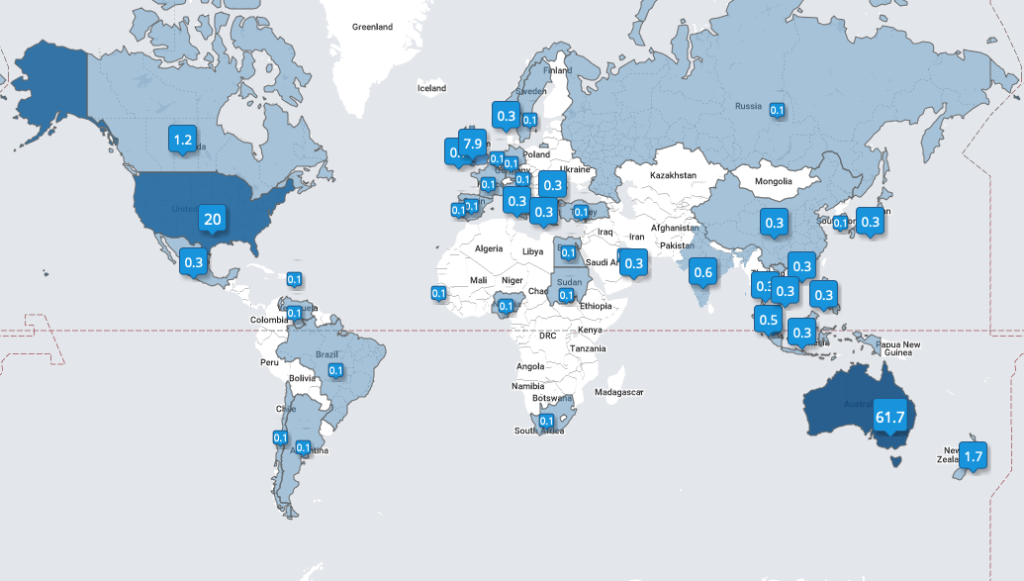I have a broad network across social media, developed through my work in different countries. My twitter account (@keithheggart) has almost 1500 followers, and my LinkedIn profile has more than 800 connections. My followers come, for the most part, from Australia, the USA and the UK. One way that I collaborate on a global scale is through the #edureading group on Twitter. This is a group of educators who use social media and particularly Twitter to engage in scholarly reading and discussions (Kolber et al, forthcoming).

I have also worked on educational technology research with two different educators from US: Akesha Horton and Erik Byker. We published a book chapter about the use of Hip Hop for education. I have also recently published a chapter in a book edited by Ann Marcus Quinn, a learning design researcher from Ireland. In this chapter, I discuss the identity of teachers as learning designers. I have also recently published a blog post about socially just learning design on the Society for Research in Higher Education (SRHE) site, with two collaborators: Camille Dickson-Deane (also from UTS) and Kae Novak (from the United States). Finally, this year (2021), I am editing a volume for Springer, entitled Empowering Teachers and Democratising Schooling, which will have 20 chapters submitted by academics and teachers across Australia.
I am also an active member of the ASCILITE professional association. This is an organisation for educators who work with technology and computers across Australasia. I attended their conference in 2020, and in June 2020 I presented to one of their special interest groups (Teledvisors) about the development fo the Graduate Certificate in Learning Design. This presentation was to 40 fellow academics and learning designers, and served to provide feedback on the design principles I had implemented.
I also took part in the CMALT cMOOC, which is a MOOC designed to assist educators in preparing their portfolio for CMALT. As part of this, I met and collaborated on our portfolios with educators from countries like Australia, New Zealand and Japan. This connection led to informal mentoring opportunities, as well as the opportunity to present at the 2021 SOTEL conference in Auckland.
In a similar fashion, I also collaborated with educators from Australia and the US on a panel for the AECT Conference in November 2020, to discuss the implications of COVID on student equity.
The final effort that I wanted to focus on for this portfolio was the establishment of the Australian Association of Learning Designers (AALD) group on LinkedIn. This was based on the networking and collaboration that I had undertaken previously; I noted that while there were many sites in which learning designers felt like they belonged (like the TELEdvisors SIG, as described above), there were none within Australia that were explicitly for learning designers. This is probably due to the confusion about the role of learning designers as much as anything else, but I wanted to give people working in the field a chance to start engaging with the notions of their profession and perhaps even consider how they might best govern standards within that. WIth this in mind, I created the AALD. At the moment, it is nothing more than a LinkedIn group, but it has been growing steadily since its inception, and now has more than 50 members. Members use it to share news, job opportunities and their work. While still in its early stages, I think this site has significant potential in the future.
References
Kolber, S., Nicoll, S., McGraw, K., Gaube, N., Heggart, K. (in review). #edureading: Leveraging social media for professional empowerment of teachers. Australian Journal of Teacher Education.
